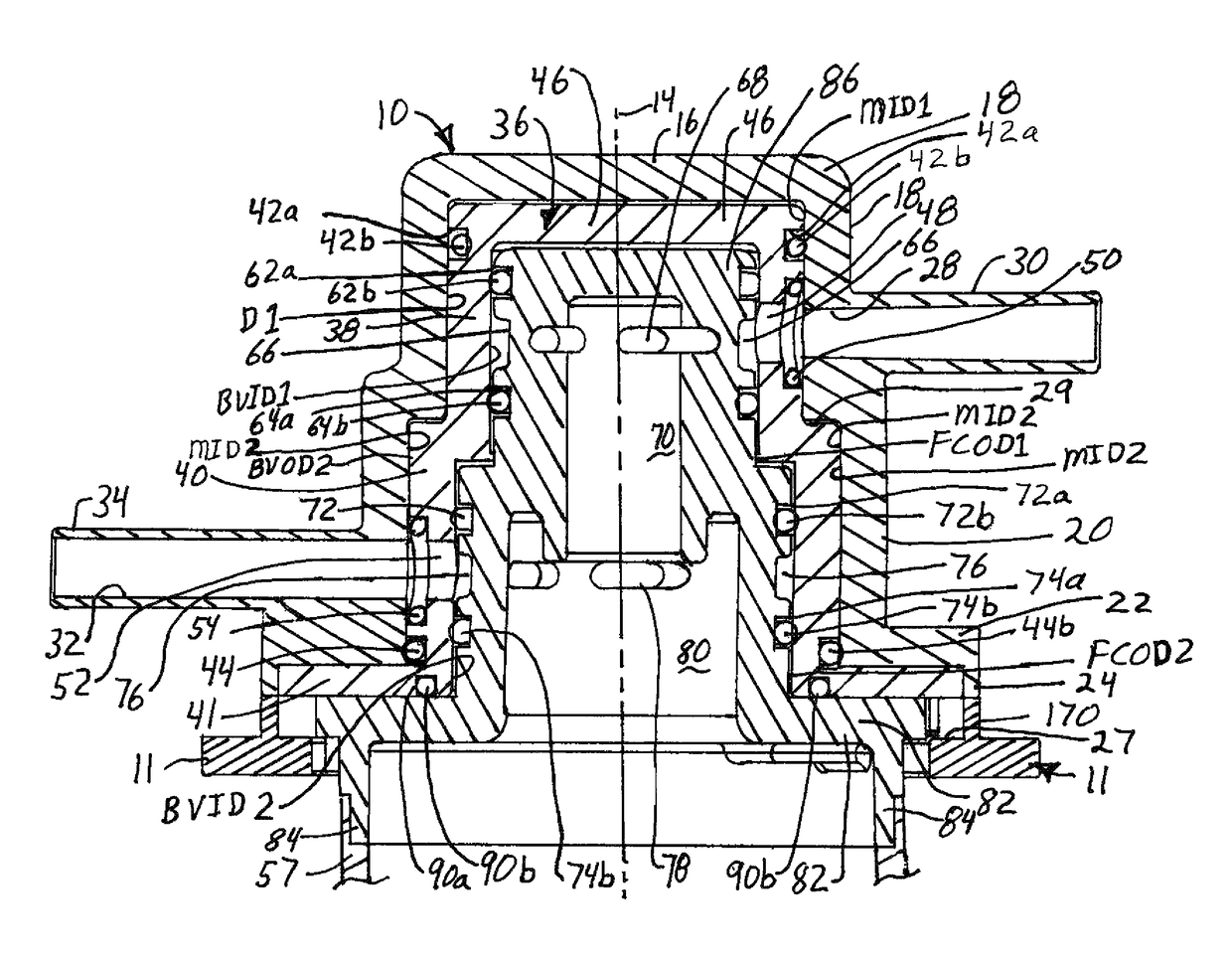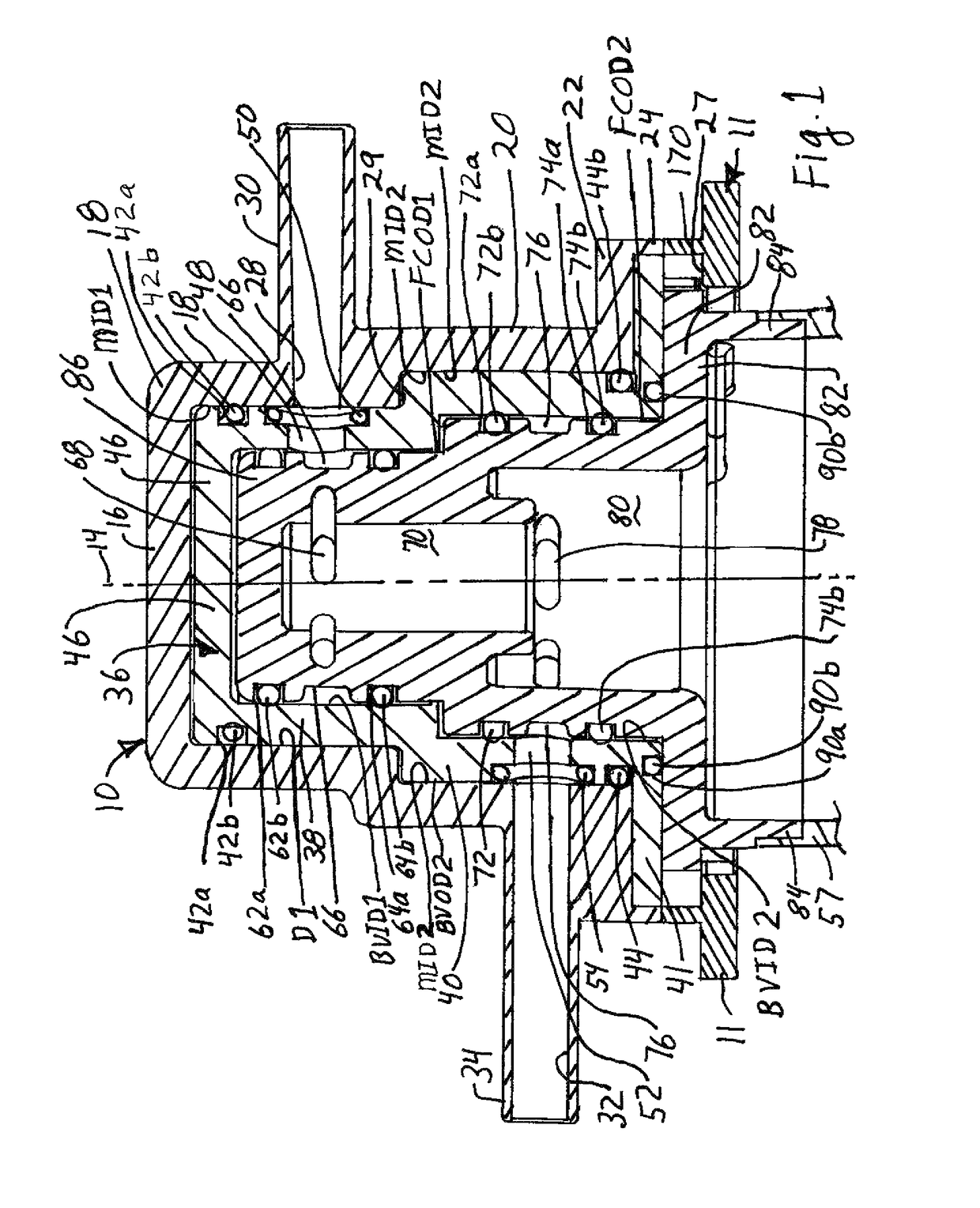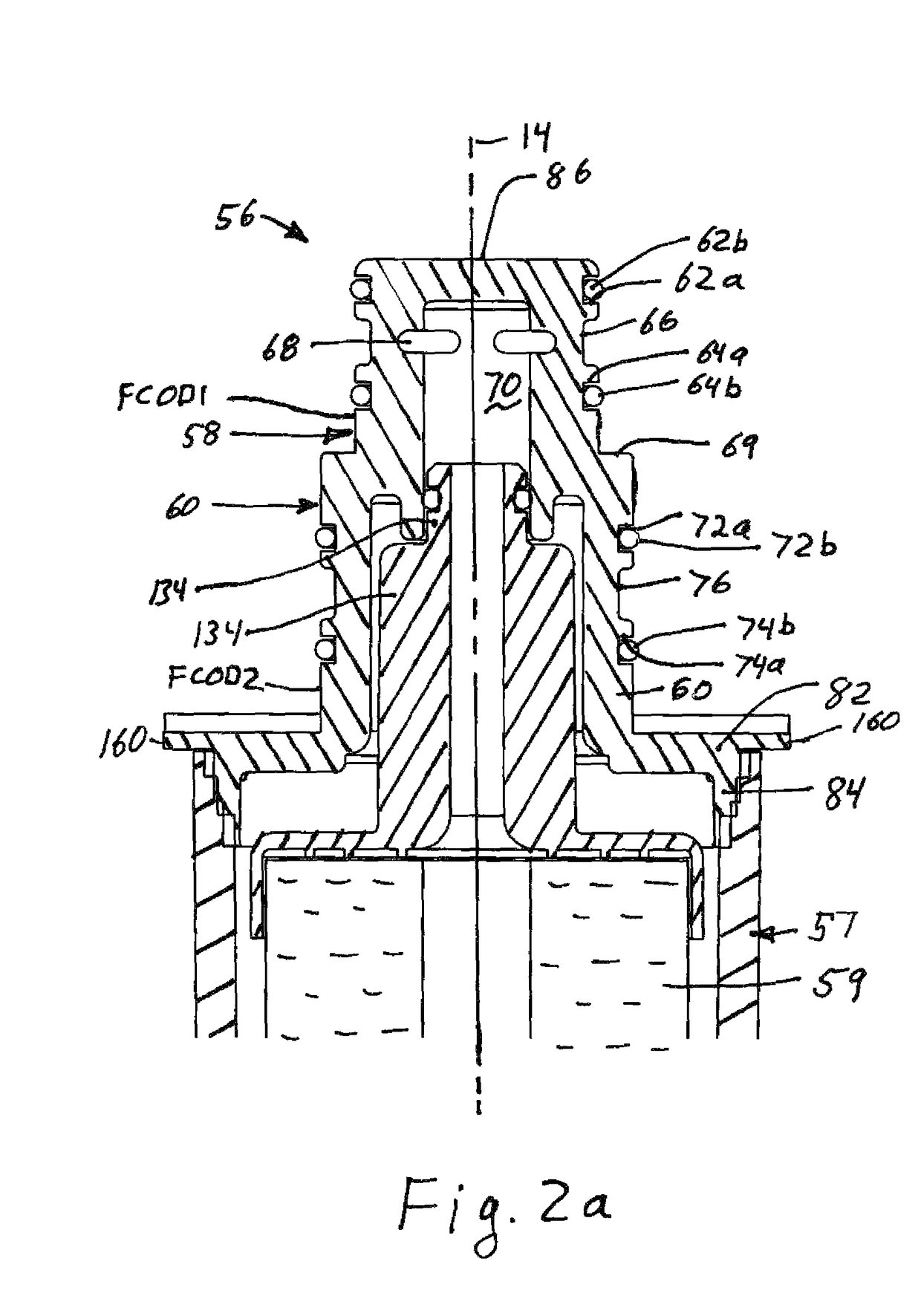Water filter cartridge and manifold head seal
a technology of manifold and filter cartridge, which is applied in the direction of filtration separation, separation process, and treatment involving filtration, can solve the problems of leakage testing each filter cartridge, the inability of current filters containing carbon to be tested in this fashion, and the defeat of rapid pressurization
- Summary
- Abstract
- Description
- Claims
- Application Information
AI Technical Summary
Benefits of technology
Problems solved by technology
Method used
Image
Examples
Embodiment Construction
[0072]Referring to FIGS. 1-3, 6-7 and 11-12, a filter manifold head 10 is connected to a manifold base 11. The manifold head 10 has a sidewall 12 (FIGS. 11-12) encircling longitudinal axis 14 and connected to end wall 16 to close one end of the manifold head and form a hollow interior with an opening opposite end wall 16. The sidewall 12 may have a first generally cylindrical portion 18 adjacent the end wall 16 and having a first interior diameter MID1 (Manifold Inner Diameter 1). The sidewall 12 may have a second portion 20 adjoining the first portion and closer to the open end of the manifold head with the second portion 20 having a second interior diameter MID2 (Manifold Inner Diameter 2). Advantageously MID2 is greater than MID1 and the end wall 16 is orthogonal to the longitudinal axis 14. Advantageously an outwardly extending mounting flange 22 encircles at least part of and preferably the entire open end of the manifold head 10. The mounting flange 22 advantageously has a ski...
PUM
| Property | Measurement | Unit |
|---|---|---|
| pressure | aaaaa | aaaaa |
| diameter | aaaaa | aaaaa |
| diameter | aaaaa | aaaaa |
Abstract
Description
Claims
Application Information
 Login to View More
Login to View More - R&D
- Intellectual Property
- Life Sciences
- Materials
- Tech Scout
- Unparalleled Data Quality
- Higher Quality Content
- 60% Fewer Hallucinations
Browse by: Latest US Patents, China's latest patents, Technical Efficacy Thesaurus, Application Domain, Technology Topic, Popular Technical Reports.
© 2025 PatSnap. All rights reserved.Legal|Privacy policy|Modern Slavery Act Transparency Statement|Sitemap|About US| Contact US: help@patsnap.com



